-
Posts
12428 -
Joined
-
Last visited
-
Days Won
554
Content Type
Profiles
Forums
Events
Everything posted by Fiery
-

Cannot connect to MySQL Database
Fiery replied to lion_kg's topic in Network audit, change tracking, SQL databases
I'm afraid you need to install the MySQL Connector/ODBC on every client computers, to make it work with AIDA64. Regards, Fiery -
Try to enable the option Wake GPUs up at AIDA64 startup in AIDA64 / main menu / File / Preferences / Stability, and restart AIDA64. Regards, Fiery
-
You can put any images on your layout. If it's big enough, and you put it on top of your list, it will act as a background image. What mobile device is that, and what resolution did you configure? And what do you mean by "looks crap" ? I mean is the whole thing off, or just some of the items are off? Is it an offset (placement) issue or sizing issue?
-
Thank you, we'll fix that up in the next AIDA64 beta update.
-
We've released the mobile edition of our industry-leading system information software for Android devices. With the new app, users of smartphones, tablets, Android TV devices and Android Wear smartwatches, running Android 2.1 or newer, can learn everything about both the hardware and the software under the hood. AIDA64 for Android features include: - CPU detection, real-time core clock measurement - Screen dimensions, pixel density and camera information - Battery level and temperature monitoring - Wi-Fi and cellular network information - Android OS and Dalvik properties - SoC and device model identification - Memory and storage utilization - OpenGL ES GPU details, real-time GPU clock measurement - PCI, USB, CUDA, OpenCL device listing - Sensor polling - Listing of installed apps, codecs and system directories - Android Wear module: native app for smartwatches The app is freely downloadable from the Google Play store [ Press Release (English) ] [ Press Release (italiano) ] [ Press Release (magyar) ]
-
No, we don't have such a profile. In case you've got a valid AIDA64 license purchased from us, you can send me your new email address in private message and I'll update your email in our customer database. If you send me your new address, please also send me either your AIDA64 product key or your old email address, so I can find you in the database
-
CPU Package is measured by the CPU itself, so in theory it should be the most accurate reading among various CPU-related temperature readouts.
-
Previous AIDA64 versions weren't able to measure the CPU package temperature on Haswell-E at all. Can you show a screen shot where it could measure it? Please do not mix "CPU" and "CPU Package" temperatures, they come from very different sources. Regards, Fiery
-
We've tested it on several Android and iOS devices, and Arx with AIDA64 works fine for us. Are you sure you've tried to find the AIDA64 icon on your mobile device by swiping left and right in the bottom row of Arx icons? The AIDA64 icon should appear as the right-most or left-most icon, depending on the type of device.
-
Please upgrade to the latest beta version of AIDA64 Extreme available at: http://www.aida64.com/downloads/latesta64xebeta After upgrading to this new version, make sure to restart Windows to finalize the upgrade. Let me know if it helps. Thanks, Fiery
-
Thank you for the data. Please upgrade to the latest beta version of AIDA64 Extreme available at: http://www.aida64.com/downloads/latesta64xebeta After upgrading to this new version, make sure to restart Windows to finalize the upgrade. Let me know if it helps. If not, then please post a new Aquaero Dump made by the new beta.
-
We'll try to reproduce the issue on our mobile devices. Meanwhile, you may want to temporarily switch to the AIDA64 RemoteSensor feature which offers virtually the same benefits that Arx provides.
-
On the bottom row (with the big icons of Arx) there should be a new AIDA64 icon appearing once you've enabled Logitech Arx support in AIDA64. Once you tap on the AIDA64 Arx icon, the AIDA64 splash screen should appear on your mobile device. There's no need to install any AIDA64 apps on the mobile device.
-
The orange theme is the old theme, and the gray theme is the new theme, and there's no way to switch between those. We used the old theme for AIDA64 v1.xx and v2.xx, and we use the new theme since AIDA64 v3.00. The old theme indicated the old memory bandwidth benchmarks that used only a single thread. The new memory bandwidth benchmarks use all available threads (they're multi-threaded), and we've decided to switch to the new theme to make sure it is visually distinct from the old one. Regards, Fiery
-
What do you mean by "default ARX value" ? Can you see the splash screen of AIDA64 on your mobile device stating what resolution you need to configure in AIDA64 Preferences?
-

Logitech Arx Control LCD for smartphones and tablets
Fiery replied to Grestorn's topic in General Discussion
In case you're using Arx on an Android device, then it's still the issue of the Logitech Arx Android app that Logitech should soon update to fix a few bugs. You may want to switch to using RemoteSensor while you're configuring your layout, and once you're done, you can switch back to Arx. You can freely copy-paste items across Arx and RemoteSensor layouts, since they're 100% compatible with each other.- 71 replies
-

Logitech Arx Control LCD for smartphones and tablets
Fiery replied to Grestorn's topic in General Discussion
That looks a bit like you were using right alignment on your Simple Sensor Items. If you do so, you may have to place the items at a different location than the preview may suggest. In your case you would have to move it 100 or so pixels to the left to make it right.- 71 replies
-
I'm afraid your memory is not quite correct about the SensorPanel's history First of all, it was unveiled in June 2011, roughly 7 months after FinalWire came on the scene and we've introduced AIDA64 v1.00. So it was never a project tied to the previous generation of software (Everest). Another slight correction: both AIDA64 and Everest are commercial products, so the business sense, our approach hasn't changed due to that switch back in 2010 at all. All our software are there to satisfy user's needs, but in exchange we need a bit of financial compensation to keep things going forward. I'm not here to complain, but we have to allocate considerable resources to keep the quality and dependability of AIDA64 on the level that our faithful users got used to. As for the SensorPanel, we've never promised or planned to implement such features like transparency or a full-blown rendering engine. If we would want to do such things, we may be better off moving the whole thing under Direct3D or OpenGL anyway, but then people would complain about the impact of the rendering engine on battery performance and CPU power saving features. We have to (and want to) cater for everyone: AIDA64 has to be easy to use so less-experienced users can understand it and perform certain tasks with it; but it also has to offer unique tools and sometimes very specialized and rather compelx features to satisfy the needs of users who are blessed with a deep knowledge about computer matters. I admit, sometimes it's tough to find the balance between those very different expectations, but the fact that we're on this scene and keep doing basically the same thing for 20 years now proves that we must be doing something right Not perfect, of course, but most things in life are not (and can not) be perfect. As for the initial excitement about SensorPanel vs. the current level of users interest, well, that's another topic that could easy fill a few pages One of the reasons behind that phenomenon is that since 2010 people keep moving more and more to ultra-mobile devices (smartphones and non-x86 tablets), and spend less and less time in front of their regular desktop or notebook PC. With the introduction of the Logitech Arx and RemoteSensor modules we've done our first steps to react to that trend, and in the upcoming months you'll see many exciting things happening...
- 17 replies
-
- Feature request
- Sensor panels
-
(and 1 more)
Tagged with:
-

New LCD device support: Samsung SPF Digital Photo Frames
Fiery replied to Fiery's topic in Hardware monitoring
Thank you for the feedback -

New LCD device support: Samsung SPF Digital Photo Frames
Fiery replied to Fiery's topic in Hardware monitoring
You can download the mentioned new AIDA64 Extreme beta update from: http://www.aida64.com/downloads/latesta64xebeta Let me know how it works -
You can download the mentioned new AIDA64 Extreme beta update from: http://www.aida64.com/downloads/latesta64xebeta Let me know how it works
-
Thank you for the screen shots. We've checked a few logs and it seems at one point Asus added those voltages, and we weren't aware of that change. The first BIOS releases for Asus Z97 boards did not have those readings Anyway, we'll add the 2 missing voltage readings to the next AIDA64 beta release due in a few days from now.
-
Yes, you can.
-
Please try the following: 1) Upgrade to the latest beta version of AIDA64 Extreme available at: http://www.aida64.com/downloads/latesta64xebeta 2) Disable Turbo Boost in the UEFI Setup, and make sure your memory modules get the right voltage, use the right Command Rate setting (generally speaking, CR2 is more stable), and are running at stock 800 MHz (DDR3-1600) frequency 3) Try the cache stability test again Let me know how it goes Thanks, Fiery
-
I'm afraid we currently have no plans to support portrait mode for landscape external LCD screens.


